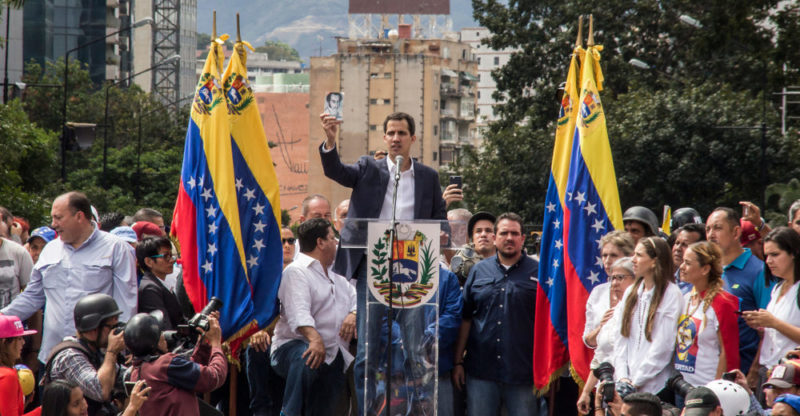We explain what centralism and federalism are and the differences between them. Also, what are its characteristics and some examples.
What are Centralism and Federalism?
Centralism and federalism are two models of political organization that seek either to concentrate all power in a single, central entity, or to distribute it throughout different autonomous and associated entities, respectively.
Centralism gets that name because it proposes a center of power for a given nation, while federalism proposes a federation or association of states on an equal footing.
Both models have their advantages and disadvantages, their followers and detractors and, throughout the history of countries (especially the young Latin American nations), they have faced each other many times , even becoming armed conflicts. The choice of one or the other model had a lot to do with the economic, social and national destinies of each country.
-
Definition
 Centralism (from the Latin focus , "in one place") is defined as a political doctrine that believes in the concentration of power in the central organ of the State, the supreme governing authority throughout the territory and that dictates the rules for distribution of wealth, the approval of laws and everything related to the territory of the nation.
Centralism (from the Latin focus , "in one place") is defined as a political doctrine that believes in the concentration of power in the central organ of the State, the supreme governing authority throughout the territory and that dictates the rules for distribution of wealth, the approval of laws and everything related to the territory of the nation.Federalism (from the Latin foedus , "pact, agreement"), on the other hand, is defined as the political doctrine that prefers to distribute power , in the first instance, in an association of states or provinces endowed with relative autonomy in political, economic and political matters. legal, which delegate part of their powers to the State and maintain much of their sovereignty.
Examples

There are numerous examples of federal and centralist doctrines. The first model belongs to the political-territorial organization of the United States , in which its different provinces house their own parliamentary, legal and judicial structures, autonomous from those of the neighboring State, and yet together they collaborate to govern the destiny of the country from a parliament and an executive of national scope.
On the other hand, a centralized model is that of Venezuela , in which all power resides in the national government based in the capital, Caracas, and from where the national budget is distributed to the provinces, laws are dictated, the bureaucracy is organized. and even governors of said provinces were decreed.
-
Types of centralism
- Pure centralism. It takes place in unitary states, in which all power resides in a plenipotentiary state organ.
- With administrative decentralization. It is a centralized state model, which nevertheless delegates certain administrative tasks to provincial commissions, in an unbreakable hierarchy whose top is in the center of power.
- With political and administrative decentralization. The looser model of centralism, also called "unitary federalism" constitutes a more or less federal model that nevertheless coincides in the predominance of the central power over the provinces.
Types of federalism

Similarly, there are various forms of application of federalism:
- Symmetric federalism. Each territory or province enjoys the same powers and responsibilities as the others.
- Asymmetric federalism. The various provinces assume different responsibilities and powers, according to their constitution and their place of preponderance in the nation.
-
Differences between federation and confederation
- Federation. A single state composed of the association of its different decentralized provinces, with an individual legal order and a national one, in which the units cannot voluntarily leave the federation.
- Confederacy. It is a group of sovereign and independent states that makes common decisions in assembly, and any state may annul said agreements in its territory and separate from the confederation if it so wishes.
Differences between centralism and federalism

The main differences between both models are:
- A single legal system in the case of centralism. Federalism, on the other hand, has a double order: that of each province, and the federal or global order of the nation. This allows two states in the same country to have some different laws.
- A decentralized bureaucracy in the case of federalism, allowing each state or province to manage its affairs independently. Whereas in the central order, everything resides in a single hierarchy that tends towards the center.
- An independent management of the provincial budget: in the case of federalism a part is destined to the maintenance of the central government; in centralism it is the latter who receives all the money and then redistributes it nationally.
-
Advantages and disadvantages of centralism
The problem with these central models is that their implementation generates a lot of friction in the provincial powers and often leads to models of power that are more authoritarian, less fair, in which the measures that should benefit the citizens of an area are decided from many kilometers away. determined province, thus disconnecting the power from the immediate reality of its people.
Advantages and disadvantages of federalism

Federalism enjoys the prestige of constituting more democratic societies in its need for permanent conciliation, assembly and agreement, in addition to respecting the social, religious or cultural individualities of the different provinces, something vital in cases of multi-ethnic countries or plurinational States.
Its disadvantage lies in a looser legal system , more prone to the independence of some of the national territories and the existence of legal gaps between one legal system and the other, starting from the jurisdictions of the provinces.
-
State types
Federal wars
Armed conflicts that arose in Latin America around the choice of the model that would govern the nascent republics now independent from Spain are often known as “federal wars” or simply civil wars .
Conflicts of this nature took place in Mexico , Venezuela or Argentina , for example, where unitary and federal sides resorted to arms to impose a political model over that of their opponents.
The above content published at Collaborative Research Group is for informational and educational purposes only and has been developed by referring reliable sources and recommendations from technology experts. We do not have any contact with official entities nor do we intend to replace the information that they emit.
She has pursued her studies in The United States, where she has graduated in Business and Economics and is currently finishing her Master studies in International Economics and Finance. Miss. Amputee is fluent in three languages: English, Spanish and Russian and has elementary knowledge of French and Italian. She love exploring how Collaborative Research Group can become the best tool to achieve the (necessary) educational change. .
Leave a reply
Your email address will not be published. Required fields are marked *Recent post

Sport: What Is It, Types, Risks, Features, Characteristics and Examples

Dogs: Emergence, Features, Characteristics, Feeding and Breeds

Story: Definition, Elements, Structure, Features and Characteristics

